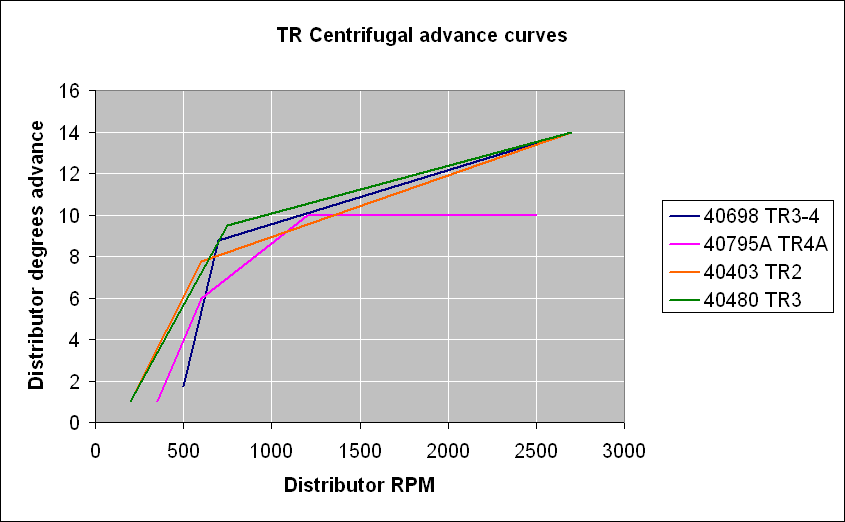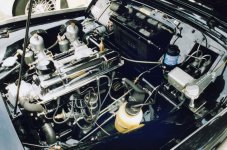af3683
Jedi Trainee
Offline
I would appreciate a little help with the static timing of a TR3B:
1) When aligning the timing mark on the crankshaft pulley with the pointer on the engine's timing cover, it is impossible to see if the 2 marks are aligned standing in front of the car. Is there any sort of "trick" to be certain that these 2 marks are exactly aligned when standing on the passenger side of the car and looking down at an angle?
2) Also regarding the thumbscrew, I've read that you should initially set it at mid range. Is this best done by turning it as far as it will go in either direction, then counting the number of "clicks" back to the opposite stop and then dividing by 2?
Also, to set the timing at 4 degrees before TDC do you turn the thumbscrew 2 "clicks" in the "A" direction? I'm confused because I read somewhere that you must turn the thumbscrew 1/2 turn to get 4 degrees before TDC.
Any help would be appreciated. Thanks.
Art
1) When aligning the timing mark on the crankshaft pulley with the pointer on the engine's timing cover, it is impossible to see if the 2 marks are aligned standing in front of the car. Is there any sort of "trick" to be certain that these 2 marks are exactly aligned when standing on the passenger side of the car and looking down at an angle?
2) Also regarding the thumbscrew, I've read that you should initially set it at mid range. Is this best done by turning it as far as it will go in either direction, then counting the number of "clicks" back to the opposite stop and then dividing by 2?
Also, to set the timing at 4 degrees before TDC do you turn the thumbscrew 2 "clicks" in the "A" direction? I'm confused because I read somewhere that you must turn the thumbscrew 1/2 turn to get 4 degrees before TDC.
Any help would be appreciated. Thanks.
Art

 Hey there Guest!
Hey there Guest!
 smilie in place of the real @
smilie in place of the real @
 Pretty Please - add it to our Events forum(s) and add to the calendar! >>
Pretty Please - add it to our Events forum(s) and add to the calendar! >> 



 A friendly reminder - be careful what links you click on here. If a link is posted by someone you don't know, or the URL looks fishy, DON'T CLICK. Spammers sometimes post links that lead to sites that can infect your computer, so be mindful what you click.
A friendly reminder - be careful what links you click on here. If a link is posted by someone you don't know, or the URL looks fishy, DON'T CLICK. Spammers sometimes post links that lead to sites that can infect your computer, so be mindful what you click.